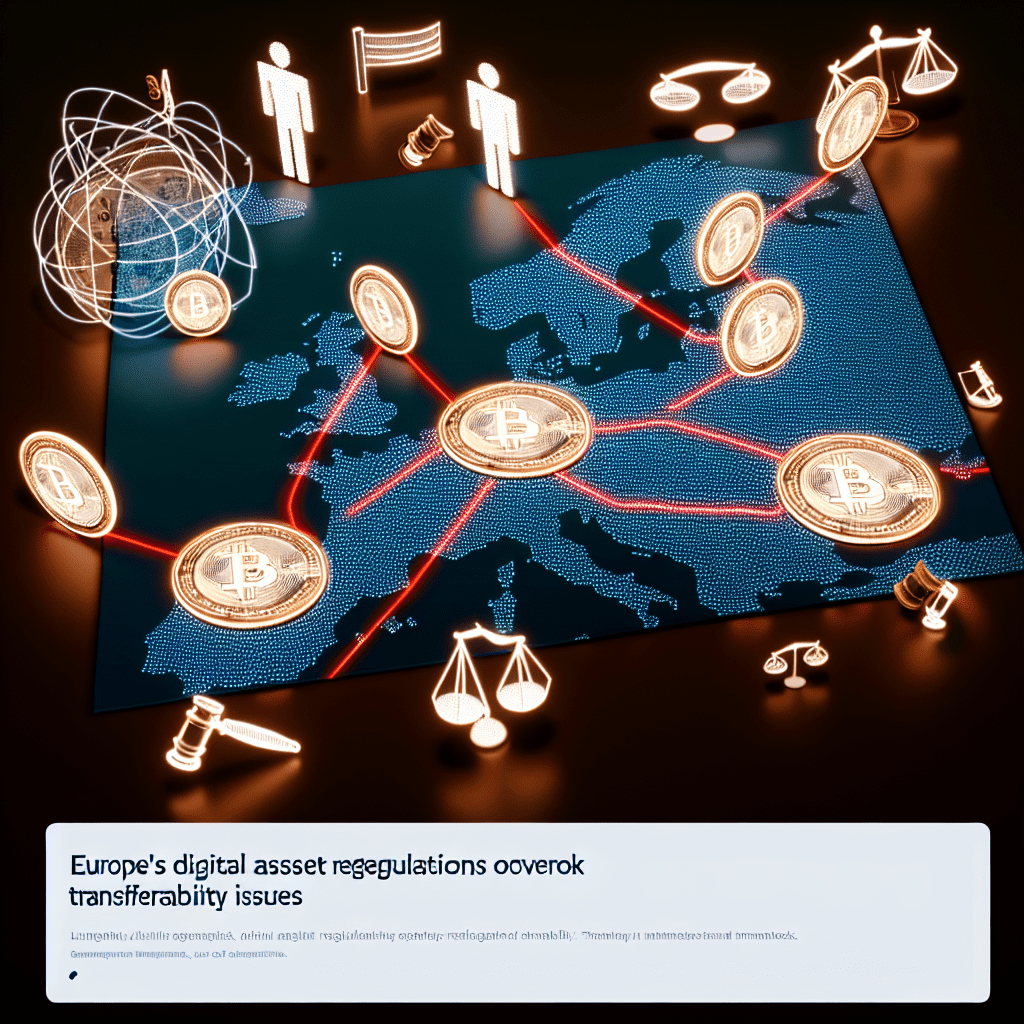
Opinion by: Elisenda Fabrega, general counsel at Brickken
Europe’s regulatory framework was crafted for assets that are movable. However, a significant category of assets, such as non-listed company quotas and tailored revenue-sharing agreements, are designed to be non-transferable. The definitions under Markets in Crypto-Assets (MiCA) assume transferability, while MiFID II addresses transferable securities and still applies to their digital counterparts, leaving “digital but non-transferable” representations in a regulatory gray area.
The EU Blockchain Sandbox presents a solution: recognizing that a true “digital twin” can maintain the legal status of the original non-transferable asset rather than being categorized as a new, transferable security token.
Some may contend that creating exceptions for non-freely transferable tokens creates loopholes. Conversely, the notion that all tokens on a public chain are inherently tradable is also up for debate. Both instincts are valid yet flawed, as highlighted in the report. If the legal, technical, and contractual frameworks align to protect the original asset’s character, the legal classification of the digital version remains unchanged.
Tokenization has outstripped the regulatory framework
A security on a ledger retains its identity as a security legally. In essence, a bond remains a bond, and a share remains a share, regardless of whether it’s in traditional or tokenized form. Conversely, creating a digital twin of a non-transferable asset and simply recording it on-chain does not automatically convert it into a security token or a MiCA-regulated crypto asset.
Related: Banks are now actively engaging with Web3 — they’re building upon it
A practical sequence that emerged from the EU Blockchain Sandbox process maintains analytical focus. First, determine if the token is a MiFID II financial instrument; if it is not, check if it falls within MiCA’s scope; if it still does not, consider the Alternative Investment Fund Managers Directive (AIFMD) for collective investment vehicles; otherwise, national law prevails. This order is vital as it prevents engineered token attributes from dictating legal outcomes. MiCA’s transferability criterion is essential: if a token is non-transferable, it is not classified as a MiCA crypto asset, and does not fall under MiCA’s categories of utility/asset-referenced tokens or electronic money tokens.
Engineered transferability can alter a token’s classification
When the underlying asset is replicated precisely (a valid digital twin), the legal classification should not change. However, if transferability features are added through workarounds or wrappers, it could create a new instrument based on a non-transferable underlying asset that falls under MiCA or MiFID II. Qualification is determined by the token’s technical and contractual attributes, not merely by off-chain documentation.
When developers seek to represent a non-transferable asset digitally but then introduce transferability to meet liquidity needs, they risk not accurately reflecting the original asset. They are effectively creating a new digital instrument that may be subject to different regulations than the underlying asset. Thus, robust technical protocols, adherence to existing regulations, and legal advice based on specific national laws are crucial to prevent reclassification into transferable assets.
Clarifications from the EU Blockchain Sandbox
For those involved in the second cohort, the engagement with regulators clarified what the Best Practices Report defines as the “digital twin” test. If the token is an exact digital replica of the original asset, its legal standing remains unchanged. However, should tokenization introduce new characteristics, like transferability, absent in the underlying asset, the legal classification could shift. This interpretation is consistent with ongoing assessments regarding when tokens qualify as financial instruments per MiFID II.
The report explores the notion of non-transferability itself. Contractual restrictions or allow-list gating alone do not suffice. The key determinant is the technical incapacity to transfer to anyone other than the issuer or offeror, alongside enforced redemption and reissuance processes if the holder changes. This level of engineering keeps a token outside MiCA’s transferability framework.
The implications for Europe’s market
Regulators do not require new legislation to mitigate risks associated with innovation. They need straightforward, practical guidance that articulates the sequence of the sandbox and the “twin” test: (1) Begin with MiFID II; (2) if outside MiFID II, verify if it falls under any MiCA asset categories; (3) if neither apply, ascertain whether it is a digital twin of an asset recognized in national law, such as private company quotas.
Ultimately, the sandbox experience demonstrated the tremendous value of structured discussions between regulators and the industry, highlighting the need to address legal gaps. This requires clarifying how existing frameworks like MiFID II, MiCA, and AIFMD interact with tokenization, while exploring uncertainties that may arise and how to navigate them in practice. The essential tools are the concepts of digital twins, transferability, and fungibility. These features directly influence legal classification.
The upcoming phase will likely involve observing how national sandboxes implement their respective laws consistently with these principles and whether this approach fosters greater uniformity among member states, thus enhancing legal certainty across the European market.
Clear guidance could facilitate compliant digitization of Europe’s expansive private company and contractual rights market while averting accidental reclassification that hampers issuance. By clearly distinguishing between digital twins and engineered transferability, the EU can sustain real-world asset (RWA) tokenization within the region instead of pushing developers to seek alternatives outside the EU.
The conclusion
Tokenization does not serve as a free pass, nor is it a trap.
The EU Blockchain Sandbox has paved the way forward. Now, regulatory bodies should solidify this framework to ensure developers understand the rules and investors are aware of what they are purchasing. This approach safeguards the market while promoting its progression.
Opinion by: Elisenda Fabrega, general counsel at Brickken.
This article is for informational purposes only and should not be considered legal or investment advice. The views, thoughts, and opinions expressed here are solely those of the author and do not necessarily reflect the views and opinions of Cointelegraph.

